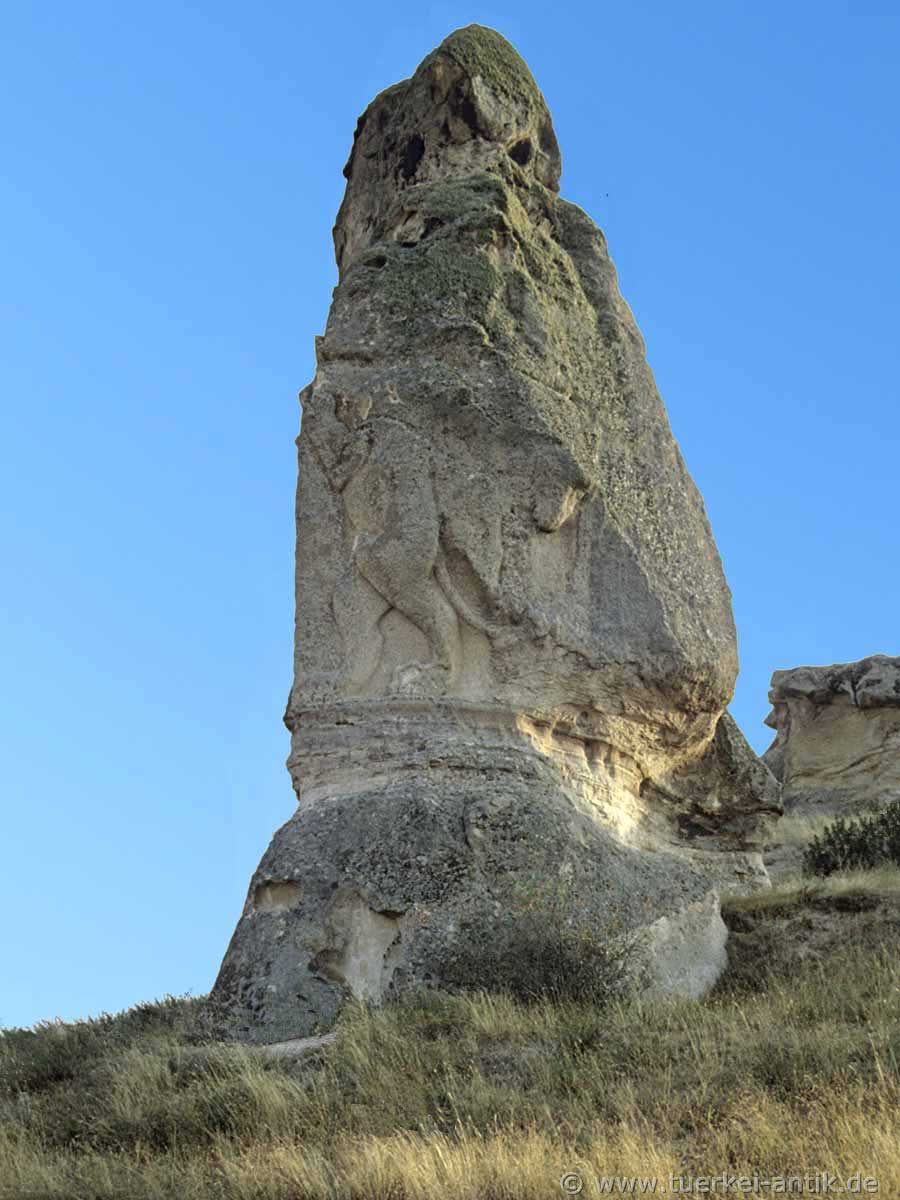 |
| Arslankaya in Phrygia | |||
|
|
|
||
| The Arslankaya | |||
|
Arslankaya (Turkish "Lion's Stone") is a Phrygian monument. The front side of the free-standing tuff monolith is occupied up to a height of 10 m by a cult fašade with gable built in the 7th or 6th century BC. The fašade is covered with a geometric relief pattern, in the centre there is a niche with a cult image of the Kybele, flanked by two lions. The inside of the niche is made up of two open wings, giving the impression of a view into a building. Two sphinx reliefs are depicted in the gable. On the sides you can see two standing lions stretching up to gable height. |
|||
|
|
|||
|
The Arslankaya on the right side |
|||
|
Phrygia is the ancient name of a region in western Central Asia Minor in present-day Turkey. This landscape is named after the Phrygians, among whom Phrygia was the heartland of a great empire in Anatolia, which reached its peak of power in the 8th century BC under King Midas.
|
|||
|
|
|||
| Cult image of the Kybele, flanked by two lions | |||
|
The early history of the Phygens lay in the dark for a long time. According to Greek and Assyrian sources, the Phrygian Empire must have been of great importance in the second half of the 8th century. |
|||
|
|
|||
| Two sphinx reliefs in the gable | |||
|
|
|||
| The landscape around Arslankaya | |||
|
|
|||
|
The Phrygians settled in this landscape from the 12th century BC, coming from Troas and Thrace. Before this region had belonged to the Hittite empire. At the beginning of the 7th century B.C., the Cimmerians invaded Phrygia and conquered Gordion, the capital of the Phrygians. The Phrygian culture, however, continued for a long time.
|
|||
| Photos: @chim, Monika P. | |||
| Translation aid: www.DeepL.com/Translator | |||
| Source: Wikipedia and others | |||
|
|
|||


